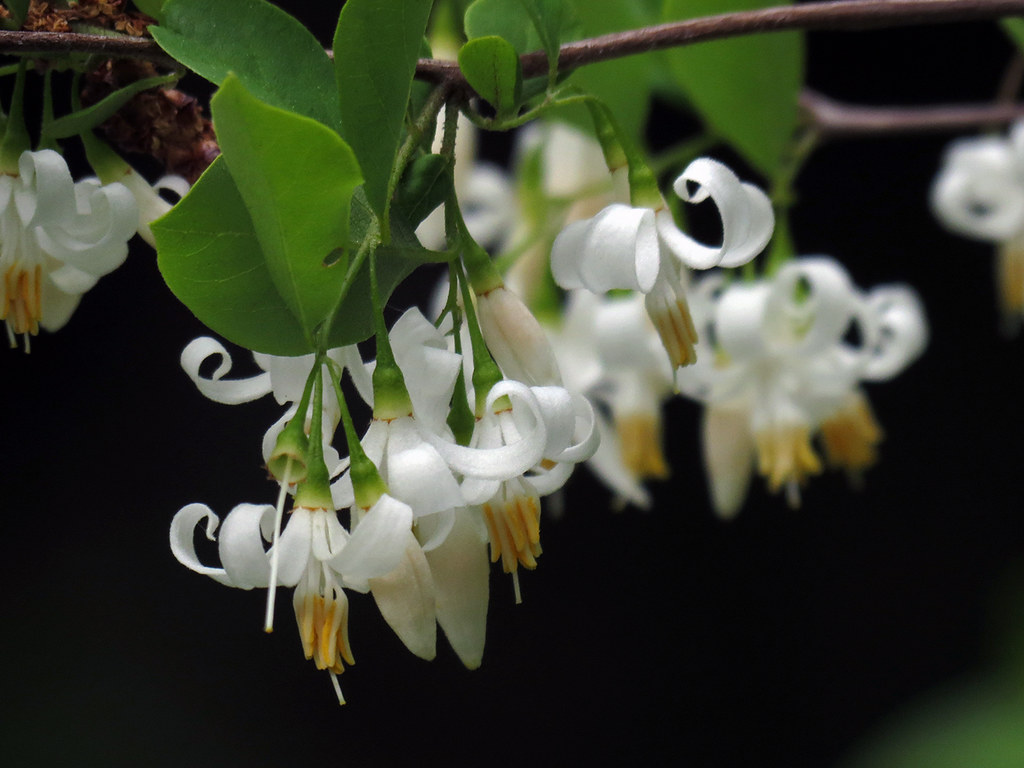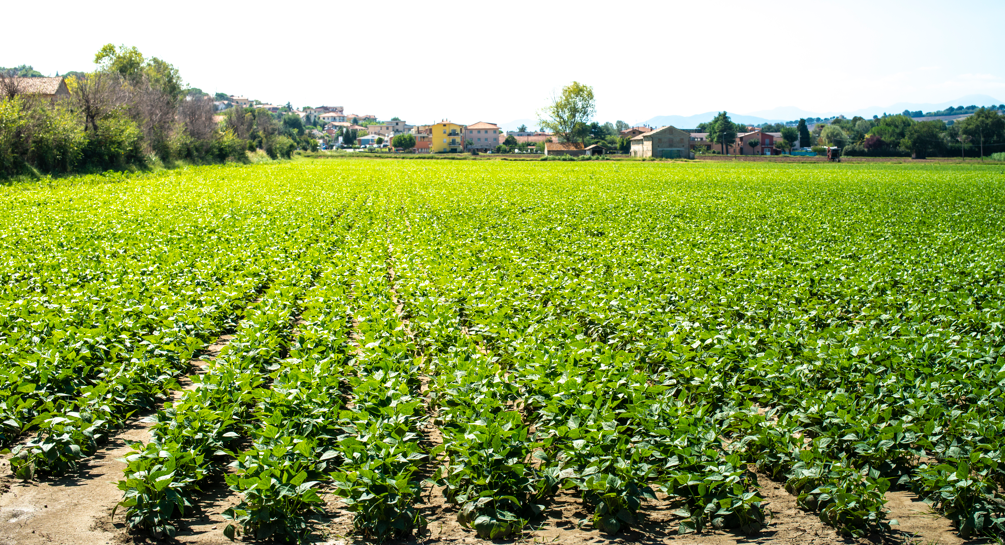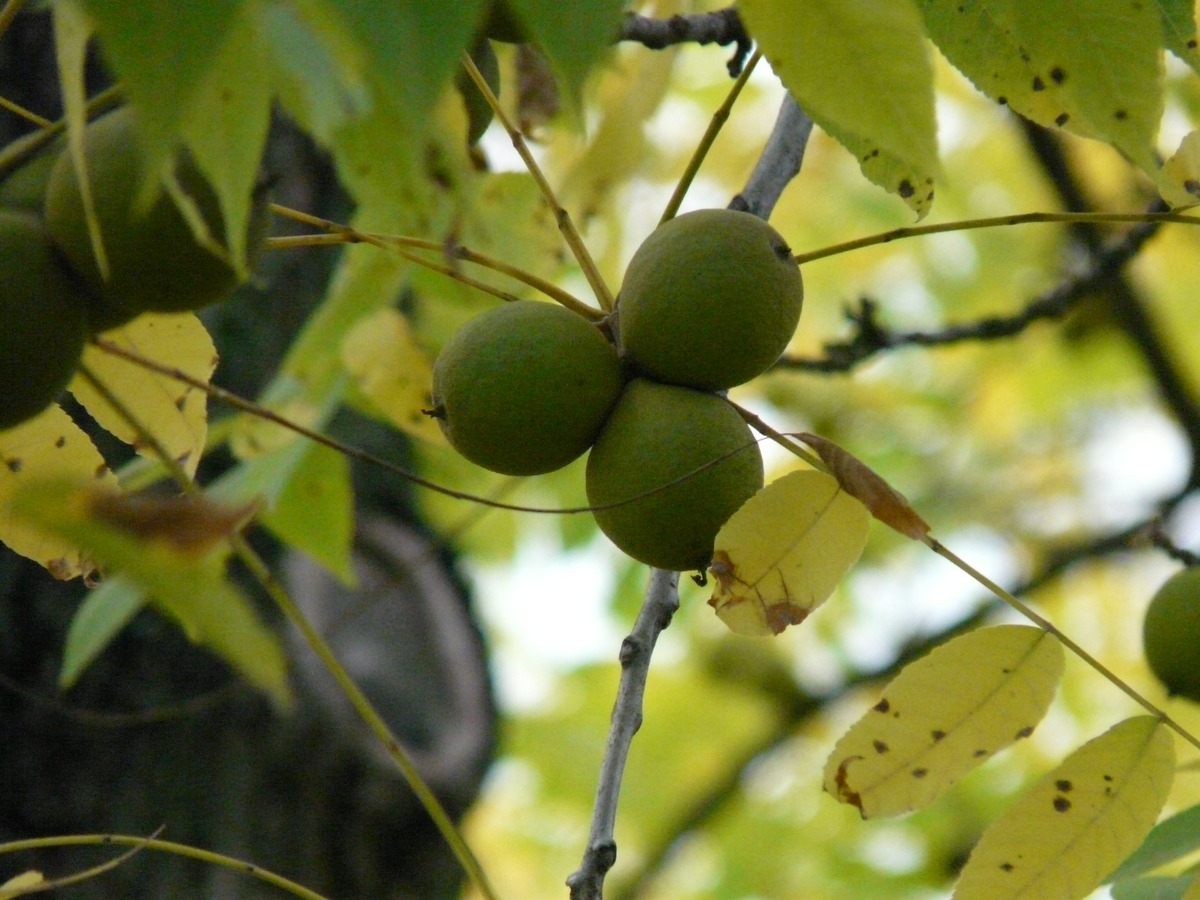- Best Soaker Hose Options Your Yard Truly Needs This Year - January 5, 2024
- Best Tomato Planters You Should Really Consider for Your Garden - December 21, 2023
- Best Home Depot Tomato Cages to Support Your Plants - December 16, 2023
This southern state is one of my favorites to visit. My cousin and I took a trip there last year and, of course, saw plenty of historical sites, but we also made a point of visiting a botanical garden. The flowers and foliage in the garden were gorgeous, and I was utterly enamored by how the climate allowed so many varieties to grow so beautifully. It was no surprise that when I got the opportunity to write about Georgia’s Growing Zone, I was thrilled.
That trip is what inspired me to write this article. My goal in researching this topic was to discover Georgia’s natural beauty and resources. My goal for writing this article is to share with you all that I discovered. When you have finished reading this article, you should have all the information you need to grow a successful garden outside your Georgian home.
Bottom Line Upfront
Researching this topic is time-consuming, so I understand if you can’t read this entire article today. If you’re in a super busy season, I suggest you prioritize the important stuff and keep this article for a slow day. But if you need a little nudge to remind you how important growing zones are for a successful garden, here is a summary of what you need to know.

Georgia’s growing zones range from 6a through 9a. With seven different zones to consider, it is nice to be able to access a zone map. With a zone map and a local zip code, anyone can find out what grows best in their area. Once this information has been accessed, it is much easier to pick out flowers, fruits, vegetables, or any other plant from a garden shop.
Some of my top recommendations for what to grow in the state of Georgia are beans, peppers, squash, mint, and Australian Tea Tree.
Georgia’s Native Plants
Georgia is very welcoming to non-native plants, fruits, and vegetables, but I always like to know what is native to a particular place. This information can come in handy for those gardeners who like to grow only native produce. It can also be a great tool for history teachers and those who enjoy studying indigenous peoples and cultures. If you’re interested, for any reason, here is a list of some of the most common native-to-Georgia plants:
Fruits, Vegetables, and other Edibles:

- American Persimmon
- American Plum
- Blueberry
- Black Cherry
- Black Raspberry
- Blackberry
- Chokecherry
- Crabapple
- Elderberry
- Huckleberry
- Juneberry
- Mayhaw
- Pawpaw
- Red Mulberry
Grasses:
- Arrow feather Threeawn
- Bushy Bluestem
- Southern Wiregrass
- Splitbeard Bluestem
- Sweet Wood Reed
- Turkeyfoot
- Upland Bentgrass
Shrubs:

- American Snowbell
- Common Witchhazel
- Oakleaf Hydrangea
- Saw Palmetto
- Sparkleberry
- Winterberry
Trees:
- American Beech
- Black Oak
- Black Walnut
- Slippery Elm
- Sugarberry
- White Ash
How to Find Your Growing Zone
Before you can determine what to grow in your garden, you must determine what growing zone you are in. To do this, you simply go to USDA Plant Hardiness Zone Map and enter your zip code. It will give you a number and possibly a letter attached to the number. With this information, you can find out what plants grow best in your area.
Because hardiness zones are mostly determined by the average minimum temperature in an area, you will need to look at a few other websites to get all the pertinent information for growing a successful garden.
- Average Maximum Temperature – Find out how hot it gets in your city or area with Weatherspark.com.
- Average Yearly Precipitation – Use U.S. Climate Data to find out precipitation averages where you live.
- Average First & Final Frosts – Garden.org offers detailed averages for local frost dates.
Georgia’s Growing Zones
The state of Georgia has seven growing zones ranging from 6a through 9a. Each zone number differs by 10° F. This difference may be slight enough for many different plants to grow in several neighboring zones. However, the difference is big enough that some plants cannot be grown in all Georgian zones. For your reference, here is a graph of Georgia’s zones and their average minimum temperatures.
| Georgia Growing Zones | Minimum Average Temperature (Fahrenheit) |
| 6a | -10 to -5° |
| 6b | -5 to 0° |
| 7a | 0 to 5° |
| 7b | 5 to 10° |
| 8a | 10 to 15° |
| 8b | 15 to 20° |
| 9a | 20 to 25° |
Georgia’s Growing Zone 6a
This zone is found mainly in the north, with a few sporadic spots in the northwestern regions of Georgia. If you live in Fannin county, you likely live in zone 6a.
Recommended Plants
Whether you are planning to grow a garden or landscape your yard, you’ll find success with the following zone 6a-friendly plants:
Beans

Not only are these easy to grow almost anywhere, but they are also highly nutritious for garden soil. If your soil needs more nitrogen, plant a few beans this year. You’ll be surprised how improved your soil is.
Brussel Sprouts
Hey, these aren’t such bad eating, especially when roasted with salt and lots of pepper. I always enjoy eating these more when I get to watch them grow in my garden. You should try some.
Cabbage
Pickled, fried, or raw in a slaw, cabbage is a special treat. I seriously enjoy watching them grow from little bulbs into giant balls of deliciousness. This veggie is too good to not grow at home.
Rose of Sharon

This flower is not only decorative, but it is also beneficial to the gardening process. Use it to attract pollinators to your garden or yard, and you won’t be worried about whether your flowers will bloom or your vegetables will grow.
Tri-Color Beech
For those who want to add a little flourish to their lawn, try one of these beech trees. Tri-Color Beech trees have leaves that are tinged with shades of green, pink, and white, hence the name. Healthy trees can grow up to forty feet tall, and their only finicky care requirement is a little shade.
Georgia’s Growing Zone 6b
This zone is also located in the northwestern part of the state. Here, it is interspersed with zone 6a. Because of their close proximities to one another, it should come as no surprise that zones 6a and 6b have a lot of overlapping plant recommendations.
Recommended Plants
You can grow any of the plants I recommended for zone 6a within this zone, or you can try one of the following options:
Peppers

When you grow your peppers, you get to be in charge of capsaicin levels. Select the varieties with the proper amount of heat and grow them to your heart’s desire.
Squash
Healthy and hardy are how I describe squash. When you gather several of these from your garden bed, you feel like a connoisseur of food. Give them a go in soup, salad, or pizza.
Tomatoes

Here is another versatile veggie. Or is it a fruit? When you’re the gardener and the chef, you get to decide. Try them with your peppers in a pasta salad or with your squash in a spaghetti dish.
Georgia’s Growing Zone 7a
You’ll find this zone in the northwestern region of the state. It, too, is interspersed with zone 6a and 6b. The city of Marietta resides within this zone.
Recommended Plants
Trees are a great plant type to focus on when you reside in this zone. For that reason, I recommend planting the following:
Cherry Plum

This is a gorgeous but finicky tree. If you want an extra punch of color in your yard, plant a few of these. If dealing with a tree that is neither drought-tolerant nor capable of sitting in wet soil seems like a bit much, then maybe move on to another option.
Flowering Quince
I love this tree because it is both tough and beautiful. You can use it as a garden hedge border since it stays relatively small and produces thorns, or you can allow them to grow as solitary trees throughout your yard. Whichever way you grow them, they will be a pleasant and unfinicky addition.
Saucer Magnolia
This tree is a cross between Magnolia liliflora and Magnolia denudata. It was bred by Etienne Soulange-Bodin in the early 1800s after he finished a tour with Napoleon’s army. Once it is established in well-draining and slightly acidic soil, it doesn’t need much more attention. Its beauty and easy-going nature are two reasons to plant several in your Georgian yard.
Sugar Maple
Before you grab one of these at your local nursery, you should do a little yard assessment. These trees get very big and can cast a huge amount of shade on your yard. Make sure your yard has plenty of room for it to grow, and you don’t mind some shadows throughout the day. If you do get one of these, you can expect a beautifully colored tree in the autumn, and possibly, some maple syrup in time.
White Dogwood
Here is another flowering tree option that is great for use in landscaping. If you opt for this type of tree, be sure to set it in a partially shady place that has well-draining and slightly acidic soil.
Georgia’s Growing Zone 7b
This zone is located slightly toward the state’s central region but is still mainly found within the northwestern areas. The city of Atlanta is partially within zone 7b.
Recommended Plants
If you live within this zone, you can grow all the plants I recommended for zones 6a, 6b, and 7a. You will just need to adjust the sowing and harvesting times slightly. Other plants you might want to try within this zone are:
Chives

I think these are fun to grow because they are so fun to chop. Let your little ones have fun growing a few in the garden. Just don’t plant them next to beans; chives inhibit the growth of legumes. Also, these pretty little green herbs are very tasty in salad dressing.
Lavender
An herb like this is perfect for lawn and garden use in zone 7b. Its looks are appealing as landscape décor, while its flowers are attractive to pollinators. With lavender, you can have your cake and eat it too.
Mint
This is my favorite herb because I love sipping it in my tea or creating a mint chocolate ice cream with it. When you use it as often as I do, growing it in your yard will save so much time and money. Fortunately, mint is so easy to grow that you just let it take care of itself. And yes, it is beautifully suited for zone 7b.
Georgia’s Growing Zone 8a
This zone takes up a large portion of the state. You’ll find it mostly within the central region, especially the areas surrounding Macon.
Recommended Plants
Again, every vegetable or fruit that has been recommended for the previous zones can be planted in this zone. The only difference will be planting and harvesting times. While those plants are all good and well in zone 8a, why not try a few others, such as these:
Banana Shrub
Here is a low-maintenance option that looks and smells lovely. Give it well-draining and slightly acidic soil and leave it alone to prosper.
Firethorn Bush

As a plant with prickly leaves, it is ideal for use as a border or hedge row. This low-maintenance plant does not require much and can grow in full sun, full shade, or anything in between.
Forsythia Shrub
This shrub will bloom if it is given six hours of direct sunlight every day, well-draining soil, and a balanced fertilizer.
Georgia’s Growing Zone 8b
This zone covers most of the southern region of the state. Cities such as Savannah, Valdosta, and Albany all reside within it.
Recommended Plants
It is safe to grow all the previous plants I recommended within this zone. You will simply need to check sowing and harvesting times. If none of the previous plants are appealing to you, try one of these:
Black Walnut

This tree is native to the land, so planting one will feel right. Do note that these will get huge, so you need plenty of space to grow one. Also, they need acidic soil to get themselves properly established.
Meyer Lemon Trees
Give these trees plenty of sunshine and well-draining soil to allow them to prosper. When cared for properly, they will provide you with a harvest of tasty and nearly seedless fruits.
Rosemary
This herb is hardy and easy to grow in any zone 7 and up. Set in a partially sunny spot with well-draining soil, and it will flourish.
Georgia’s Growing Zone 9a
This zone stretches along the Atlantic coastline and encompasses the city of Brunswick.
Recommended Plants
Though sowing and harvesting times will vary, all the previously recommended plants are perfectly suited to grow here. Besides those options, you can try these:
Australian Tea Tree
This plant enjoys sandy soil and plenty of sunlight, which means it is ideal for a seaside landscape. It is a very easy-going plant that doesn’t require much fertilizer or babying.
Knock Out Roses

Here is another easy-going plant that I found for zone 9a. It is heat-tolerant and sun-loving. Not only does it grow well in a coastal environment, but it looks amazing there.
Watermelon
You can’t go wrong with this fruit in your garden. I know your family will love growing and eating several of these over the summer, so definitely plant a few of them.
FAQs
Answer: The Cherokee Rose is the state flower. It was widely used by the Cherokee for years and was given its status as a state symbol in 1916.
If you’re curious, the state tree is the Southern Live Oak, the state vegetable is the Vidalia Sweet Onion, and the state fruit is the peach.
Answer: Georgia lies along the Atlantic coastline, so it is appropriate to wonder how that large body of water may impact its climate and growing zones. Well, water does impact climate. Because water heats and cools slowly compared to soil, it can significantly change temperatures in areas around it. Not only are temperatures affected, but precipitation is as well. These show that water plays a huge role in determining growing zones.
Answer: Some are and some are not. For example, Cumberland Island is in zone 9a, whereas, Tybee Island is in zone 8b. While these are neighboring zones and should grow many of the same plants, I recommend that you always check the USDA Hardiness Map for your zip code before planting anything.
In Conclusion
Hopefully, this tour of Georgia’s growing zones has been helpful to you, your lawn, and your garden. With such a wide variety of zones in one state, I do think is helpful to know which zone you live in. Now, you should be able to grow with great success.
For more resources on how to grow flowers, fruits, and vegetables in your neighborhood, check out these Jardin HQ articles:
- How to Start a Flower Garden – Top Tips, Tricks, and More
- How to Start Growing Fruit Trees and Berry Bushes
- How to Start a Vegetable Garden: All You Need to Know

